Laura Knight in 5 Paintings: Capturing the Quotidian
An official war artist and the first woman to be made a dame of the British Empire, Laura Knight reached the top of her profession with her...
Natalia Iacobelli 2 January 2025
Despite extreme opposition, Lyubov Panchenko dared to celebrate her Ukrainian identity through colorful folk art collages. Tragically, the 84-year-old artist died during the Russian invasion of Ukraine.
Lyubov Panchenko (1938-2022) was a revolutionary folk artist who overcame a lifetime of obstacles in pursuit of her work. It began when she enrolled in art school against her family’s wishes and culminated when she died on 30 April 2022, weeks into starvation during the occupation of her hometown of Bucha by Russian military forces.
Decades of creative output and political activism characterized Panchenko’s life from beginning to end. Today, her vibrant folk art lives on after her death. Her charming collages look to the past and towards a brighter future, celebrating the rich culture and perseverance of Ukraine.
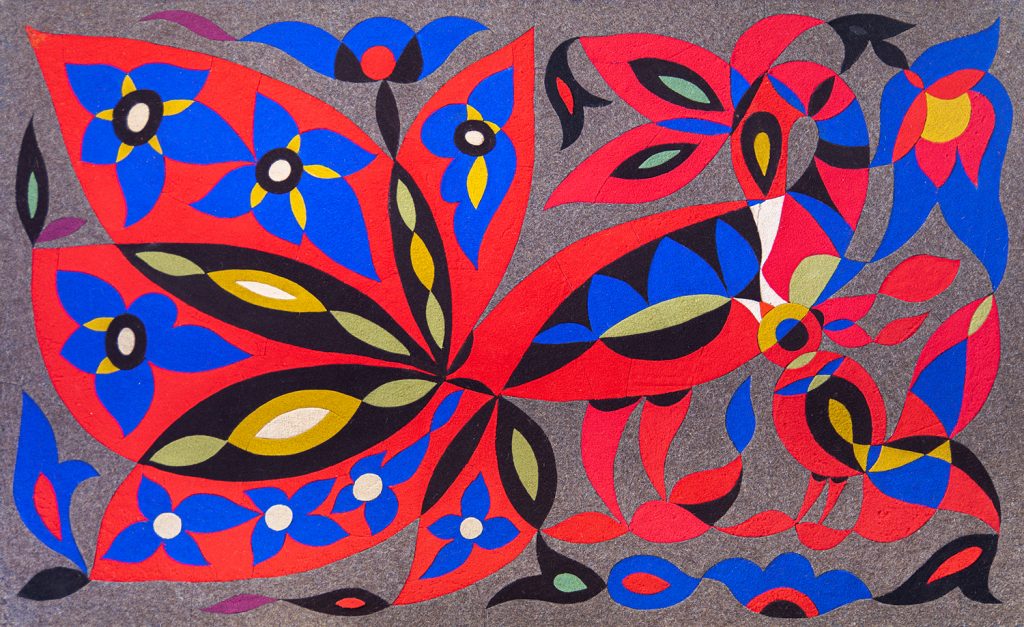
Lyubov Panchenko, Motherhood, The Ukrainian Sixtiers Dissident Movement Museum, Kyiv, Ukraine.
In 1938, Lyubov Panchenko was born in Bucha, back then a small village near Ukraine’s capital of Kyiv (now a city in the Kyiv Oblast where the infamous massacre took place in 2022). Her parents discouraged her childhood interest in art, often punishing her just for picking up a drawing pencil. However, Panchenko was not deterred. She painstakingly put herself through art school without her family’s support, graduating from the Kyiv School of Applied Arts with a degree in embroidery.
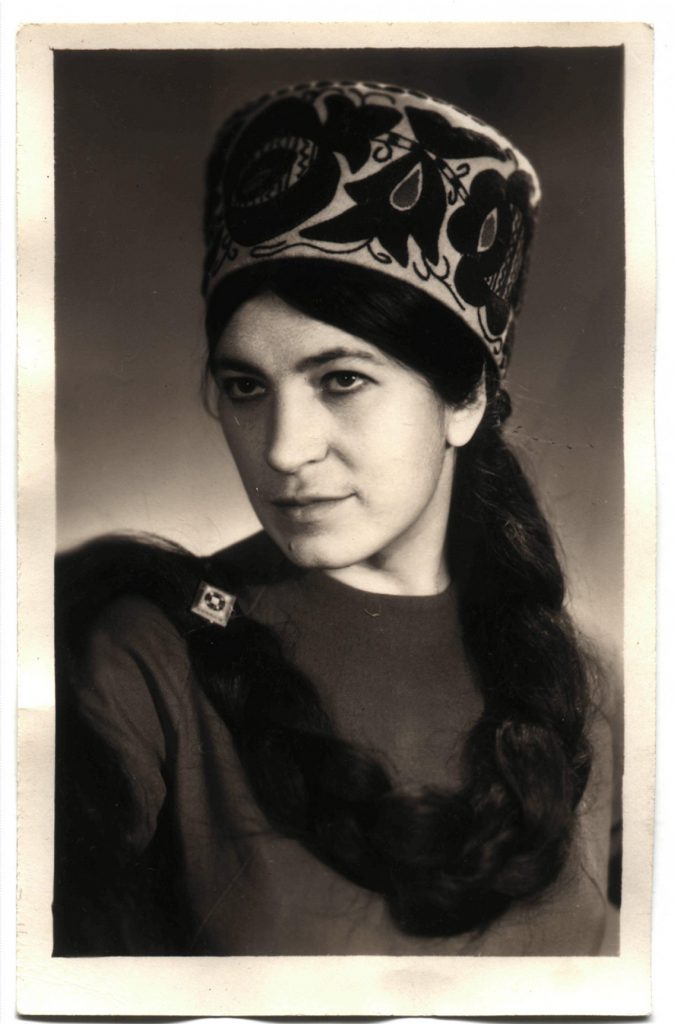
Photograph of Lyubov Panchenko. TheLostTreasures.
Early on, Lyubov Panchenko found work as a tailor and later as a fashion designer. She also mastered drawing, watercolor, and linocut techniques. Her signature collage style emerged as a result of her her multifaceted skillset and passion for Ukrainian culture. Panchenko pieced together cut pieces of brightly-colored clothing textiles to create delightfully decorative compositions. She typically incorporated overtly nationalistic symbols and other elements of Ukrainian folk art in her work.
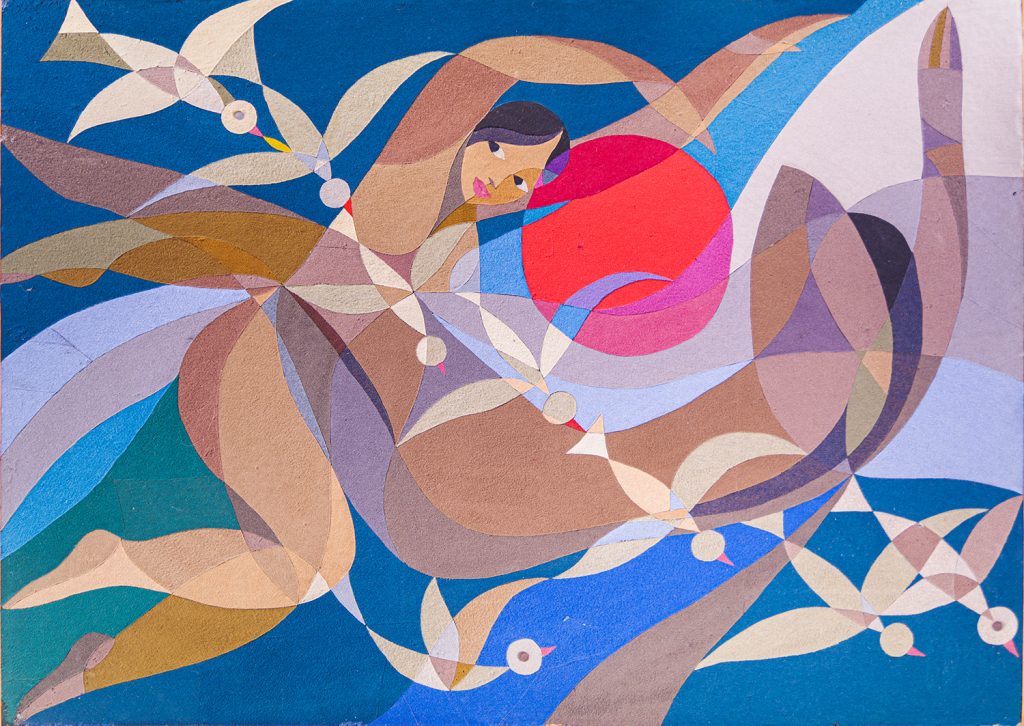
Lyubov Panchenko, In Starry Space, The Ukrainian Sixtiers Dissident Movement Museum, Kyiv, Ukraine.
The Soviet Union’s totalitarian rule over Ukraine stymied the creativity of young artists in Kyiv, including Lyubov Panchenko. For much of her career, the Soviet government censored Ukrainian art in favor of Russian Socialist Realism. Due to her devotion to colorful Ukrainian folk art and brash anti-Soviet activism, she was forbidden to exhibit her art for decades.
To make ends meet, Panchenko published decorative embroidery patterns in magazines for women and pursued a career in the fashion industry. Then, by the 1960s, an important cultural shift began in Ukraine – and Panchenko was determined to play a part in it as an artist.
The Soviet Union slowly relaxed censorship of Ukrainian voices in the 1960s. A group of creatives aptly called The Sixtiers emerged and embraced the opportunity to fight back against the Russification of Ukraine’s national culture. As a Sixtier, Lyubov Panchenko asserted her national identity through folk art.
Before Ukraine regained its independence in 1991, Panchenko received little positive recognition for her work. The Soviet Union maintained an oppressive hold not just on Ukraine’s sovereignty as a nation, but on Ukrainian art and culture as well.
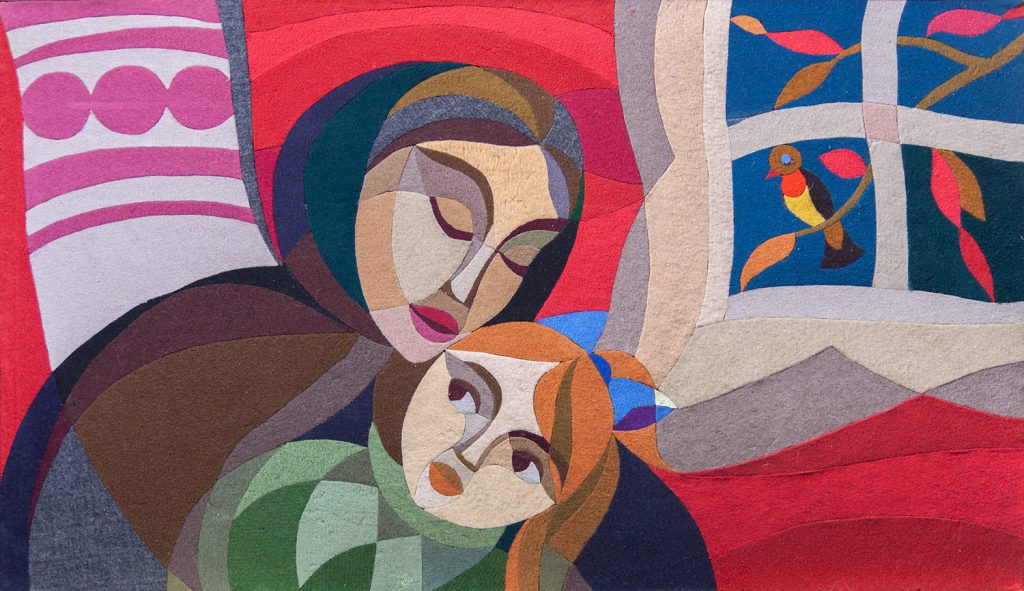
Lyubov Panchenko, Mother’s Fairy Tale, The Ukrainian Sixtiers Dissident Movement Museum, Kyiv, Ukraine.
Lyubov Panchenko’s deep appreciation of traditional Ukrainian visual culture – from folk art and interior decorating to traditional clothing and everyday objects – informed both her artistic development and her political activism. Lively organic forms, technicolor palettes, and an emotional understanding of people and animals characterize her artistic approach.
Panchenko’s dedication to preserving and advancing traditional Ukrainian folk art within an oppressive political climate helped re-popularize Ukrainian culture at large. For example, Panchenko participated in a rebellious revival of Ukrainian holiday traditions in Kyiv, including painting traditional Easter eggs, during the Soviet regime. She also raised money to support anti-Soviet activists in prison.
Each of Lyubov Panchenko’s collages is an unabashed celebration of Ukrainian culture. This is why, during Soviet occupation, Panchenko’s masterfully made and seemingly unthreatening art never entered the spotlight.
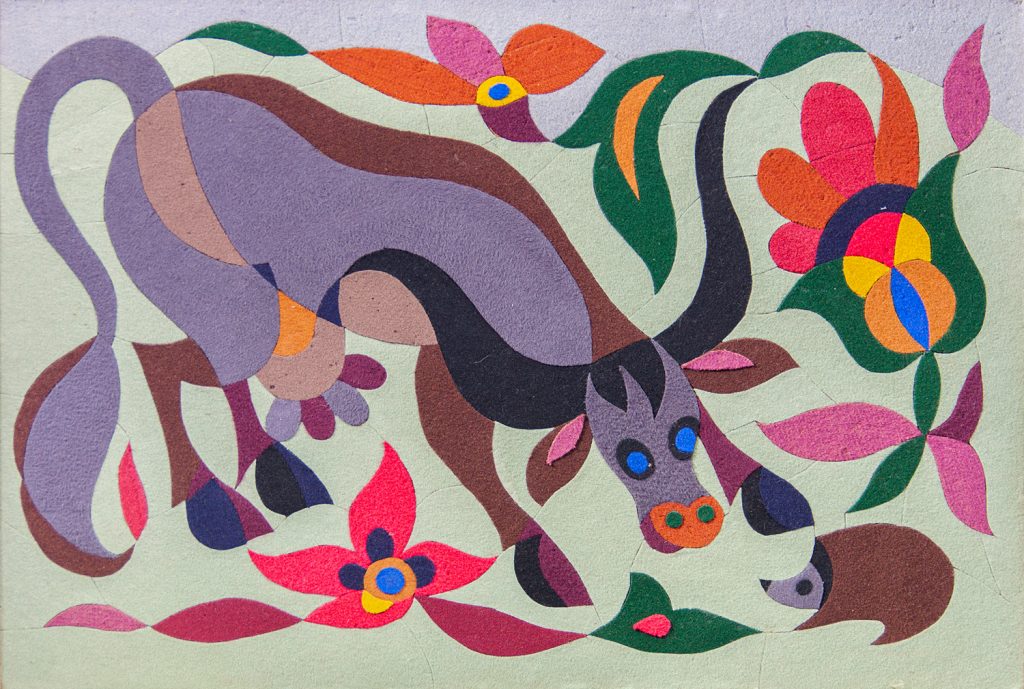
Lyubov Panchenko, An Unexpected Meeting, The Ukrainian Sixtiers Dissident Movement Museum, Kyiv, Ukraine.
After the collapse of the Soviet Union, Lyubov Panchenko was finally given opportunities to exhibit her Ukrainian folk art collages. She showcased her work in prestigious solo exhibitions and permanent museum collections. Additionally, the Museum of the Sixtiers in Kyiv opened to celebrate Panchenko and her revolutionary contemporaries.
Panchenko’s artistic and political momentum was in full force until the end of her life. When Russian forces advanced on her hometown of Bucha, she stayed at home under occupation for over a month. Starvation and isolation contributed to her death on 30 April 2022.
Lyubov Panchenko demonstrated the revolutionary power of art throughout 84 years of her life. Perhaps she would have found earlier success as an artist if not for Soviet censorship. She would likely still be crafting collages in her Bucha studio today if not for the latest Russian invasion.
Ukrainians and folk art appreciators everywhere are determined to celebrate Lyubov Panchenko’s revolutionary legacy – both as an influential artist and a fierce defender of Ukrainian culture against violent opposition.
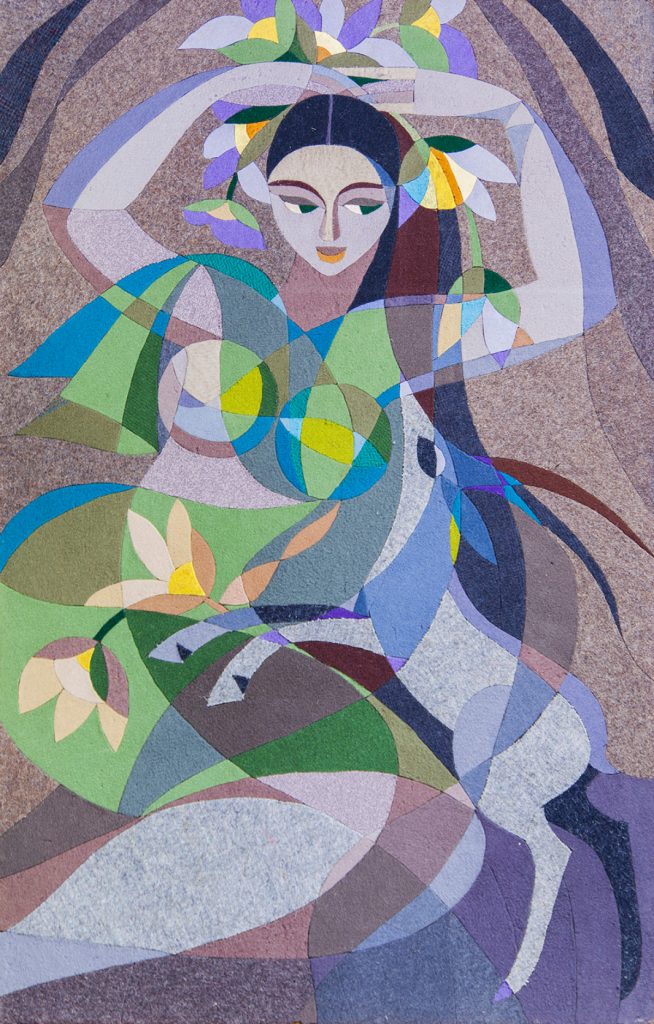
Lyubov Panchenko, Lily, The Ukrainian Sixtiers Dissident Movement Museum, Kyiv, Ukraine.
DailyArt Magazine needs your support. Every contribution, however big or small, is very valuable for our future. Thanks to it, we will be able to sustain and grow the Magazine. Thank you for your help!